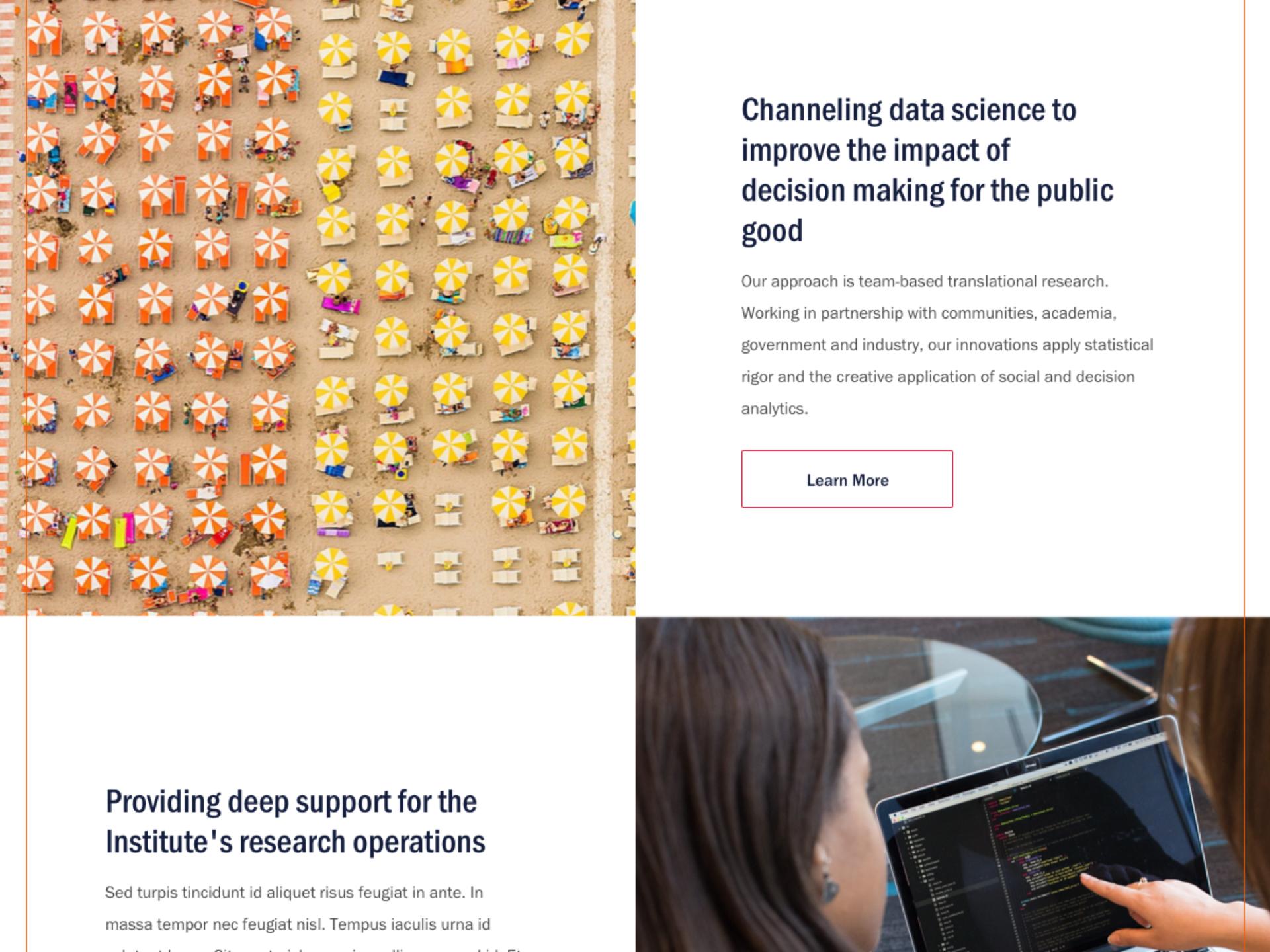
Taking the Complex out of Biocomplexity

For more than two decades, the the UVA Biocomplexity Institute has studied very complex living systems, including climate change, social media and viral pandemics. Working as interdisciplinary research teams, the experts at the Institute tackle questions too massive for any one science to take on.
The Challenge
After moving from Virginia Tech to the University of Virginia—but before diving into epidemiological modeling to track COVID-19—the Institute came to us for help with something they’d never tackled before: their brand.
This turned out to be a complex challenge. As a collaboration of experts in diverse fields, the Institute excels at talking about knotty problems that are inextricably linked to even more complicated ones. Their researchers collaborate and share their analyses with high-level partners. What they don’t do often is explain their work to the world in general. When they asked for help introducing themselves to their new home university and potential project sponsors, our job was to help them articulate their mission and far-reaching research to audiences with no background in the Institute.

The Solution
Complex work needn’t lead to obscure branding or messaging. Our messaging strategy helped the Institute talk about itself—its approach, methodologies and history of successful partnerships. This process crystallized their message and defined the Institute’s relationship to audiences as scientific but clear and fundamentally human. From there we built a messaging voice that brings the Institute to life and develops a unified identity for its dispersed teams.
These tools make explaining individual projects simpler. We advised the Institute to write for all readers and even explain how they do their work—in the simplest terms. We recommended that they structure their narratives around basic concepts and build up to demonstrate impact, rather than emphasizing massive interconnection and complexity.
Our site design reflected these principles. It pairs lots of imagery with lucid, inviting language. By surfacing data in a lively way, the site visually represents the Institute’s work. Where possible the site demonstrates impact, answering the question: Why study massively interacting systems?




The Result
Our branding identity strategy brings the human element of the Institutes work to the fore. With beautiful images and a clear voice and tone in place, the new website lets the work speak for itself. Its impact emerges and its mission comes to life: work toward solutions to complex problems for humanity.